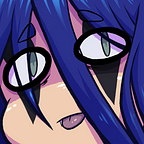The Monstrosity of Shonen Manga: When Words and Images Combine
A brief summary of “(Fullmetal) Alchemy: The Monstrosity of Reading Words and Pictures in Shonen Manga”, by Lesley-Anne Gallacher.
As an avid fan of comic books, I am more than familiar with the pervasive assumption that comics are a lesser form of both literature and art, and is therefore undeserving of analytical review. It’s a frustrating reality that is beginning to change, but something I have yet grown used to, especially in regards to the realms of manga, which don’t even benefit from easy recognition by popular culture. So, one could imagine my excitement when I came across a peer-reviewed article in the academic journal Cultural Geographies, all focusing on Hiromu Arakawa’s series Fullmetal Alchemist.
“(Fullmetal) Alchemy: The Monstrosity of Reading Words and Pictures in Shonen Manga”, by Lesley-Anne Gallacher, is an article that came as part of her doctoral research on how shonen manga can be understood and read through the combination of words and pictures. Gallacher argues that manga’s use of illustrations and text act as a “monstrous” composite text, and that even after becoming recognized, or “domesticated”, remain open-ended, as meaning is always a dynamic form.
Gallacher opens her article by defining the term “monster” as used frequently within the paper; Namely, they are the combination of two incomprehensible or unfamiliar things that, when combined, reveal something. And in order to understand them, we must offer hospitality to them, not forcing them to conform to our specific view of the world. Gallacher then applies this concept to Fullmetal Alchemist — both to its characters and plot, and to its physical form as a comic. She also includes the idea of “alchemy” here being involved not only within the story itself, but as a function of the reader producing a change in the text as they read through the comic.
Gallacher’s evidence for her article hinges on applying the various literary and comic design theories found in the works of individuals such as Gotthold Ephraim Lessing, Gillian Rose and Will Eisner, to a small segment of a story present early on in the narrative of Fullmetal Alchemist. In section II she “reads”, or describes in detail, an eight page spread of the “Nina storyline” in the manga, in which protagonists Ed and Al come to discover the man they had been visiting to borrow research materials from had used alchemy to create a fused animal, a chimera — out of the man’s daughter and dog. This segment was chosen not only for its narrative value and fundamental depiction of comic structure, but also as a literal reflection of the concept of monsters and creating something out of alchemy.
The bulk of Gallacher’s article after presenting her story analysis, goes on to speak directly on the combination of text and picture within comics, and how that functions in the greater realm of literature. She describes how the combination of these seemingly mutually exclusive things has been seen as freakish, monstrous failure of both proper writing and proper art. However, she also argues that the images and text are supplemental to each other, with the images providing greater meaning than just the text on its own. Even within Gallacher’s textual recounting of the manga pages she describes, her account omits key details of the illustrations that cannot fully be expressed through words. She also speaks on how the panels and gutters of a comic play into the semantics of comics, speaking on theories written by Thierry Groensteen and Scott McCloud.
In the end, Gallacher uses this analysis of Fullmetal Alchemist’s structure as a comic to create the idea of a monstrous literary form. And it is by understanding the parts of the monster and welcoming it as a cohesive form rather than disparate parts, is how the most meaning can be gleaned from the story it is trying to tell. She ends on emphasizing that the meaning of the story itself is monstrous too, and that it is amorphous and ever-changing. Just like the alchemy that makes up Fullmetal Alchemist’s world, the manga’s meaning is not static and as easily understood as one may initially think.
